Discover 50 hidden attractions, cool sights, and unusual things to do in Colombia. Don't miss out on these must-see attractions: Gold Museum (Bogotá), Maloka (Bogotá) or Simón Bolívar Park (Bogotá).
Below, you can find the list of the most amazing places you should visit in Colombia.
Table of Contents
Gold Museum, Bogotá
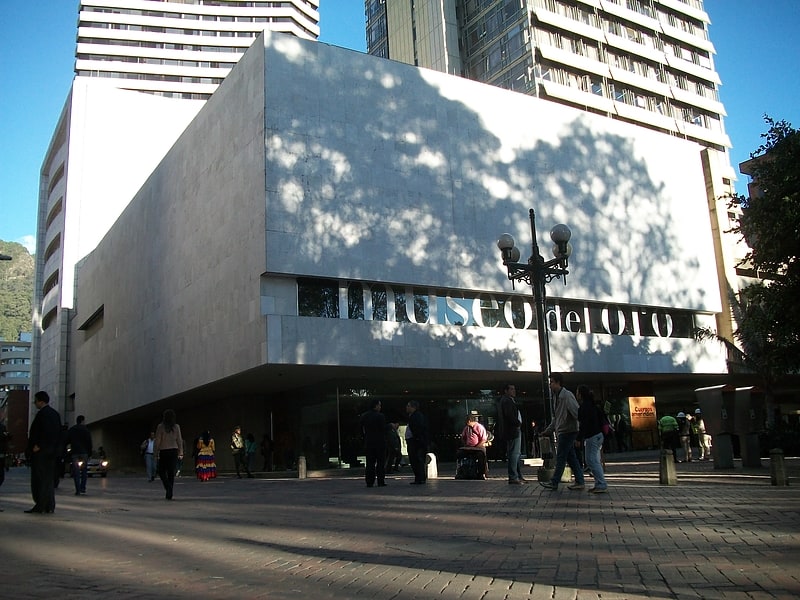
Also known as: Museo del Oro
Museum in Bogotá, Colombia. The Museum of Gold is a museum located in Bogotá, Colombia. It is one of the most visited touristic highlights in the country. The museum receives around 500,000 tourists per year.
The museum displays a selection of pre-Columbian gold and other metal alloys, such as Tumbaga, and contains the largest collection of gold artifacts in the world in its exhibition rooms on the second and third floors. Together with pottery, stone, shell, wood and textile objects, these items, made of a– to indigenous cultures – sacred metal, testify to the life and thought of the different societies which lived in present-day Colombia before the Spanish conquest of the Americas.[1]
Address: Cra. 6 ##15-88, 110321 Bogotá (Santa Fé)
Maloka, Bogotá
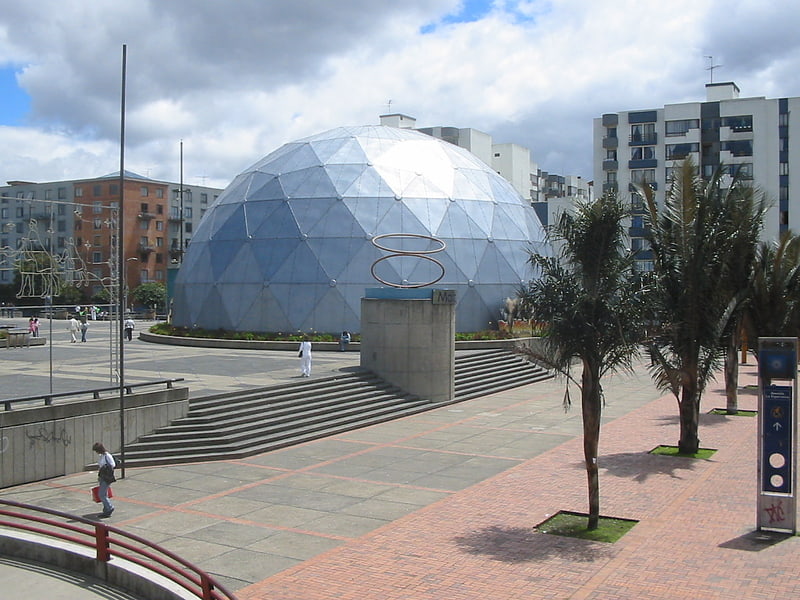
Science museum with a planetarium. The Maloka Museum is an interactive science museum located in Bogotá, Colombia. Visitors interact with a wide variety of exhibits that explore topics in Science and Technology.
The museum has 9 rooms, with different science and technology topics; the Telecommunications Room shows interactive games about Binary System, the Computers' language, How does the cellphone work or what's the communication process.
The next room is The City, it shows different modules where you can see 3D images of Bogotá with glasses, the development and history of the city and see a model of it where you can see all the buildings in it.
The Human is a room where visitors can explore the perfect machine, the human body.
The Universe room is one of the most popular rooms in the museum, where visitors can do experiments, such as knowing a person's weight in the planets of Solar System.
Petroleum, is other room located in the second floor, there one can see the process of exploring and exploiting that treasure, and its different kinds and characteristics.
The Water Room, show you through games the physic and chemical characteristics of that liquid; the others are the Biodiversity and Boys & Girls' room.
The museum has an Activity Zone with math games and activities too.
The museum has a dome theater where documentaries are shown.[2]
Address: Cra. 68d ###24A-51, 110931 Bogotá (Fontibón)
Simón Bolívar Park, Bogotá
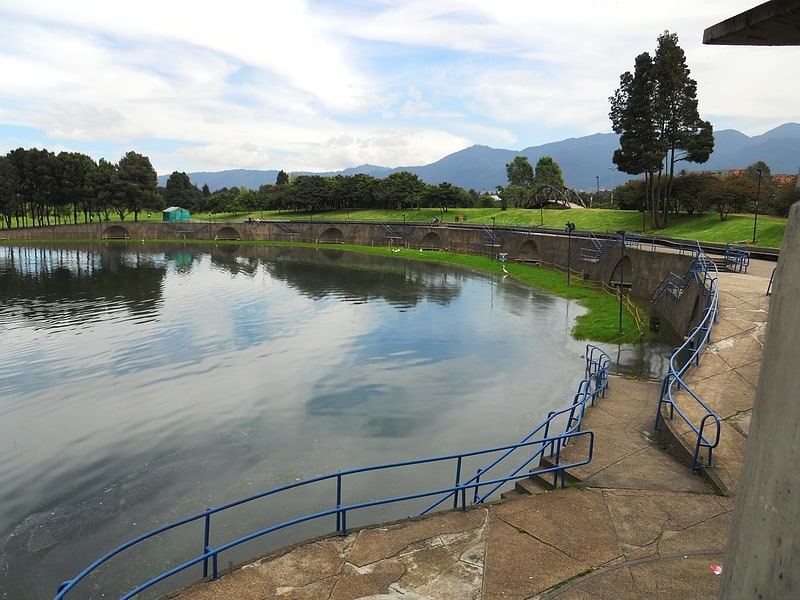
Also known as: Parque Metropolitano Simón Bolívar
Big city park with a lake and playground. The Simón Bolívar Metropolitan Park, best known as the Simón Bolívar Park, is a greenspace and entertainment and sports complex located in the middle of the city of Bogotá, Colombia.
The park is named after the Latin American Liberator Simón Bolívar. The park is located in the locality of Teusaquillo and is managed by the District Institute of Recreation and Sport (Instituto Distrital de Recreacion y Deporte - IDRD). The park is one of the most popular urban parks in the city of Bogotá.
The park features a lake in which people can rent paddle boats and a large space for concerts and events capable of holding 140.000 people.[3]
Address: Av. Calle 53 y Av. Esmeralda #s/n, 111321 Bogotá (Teusaquillo)
Castillo San Felipe de Barajas, Cartagena
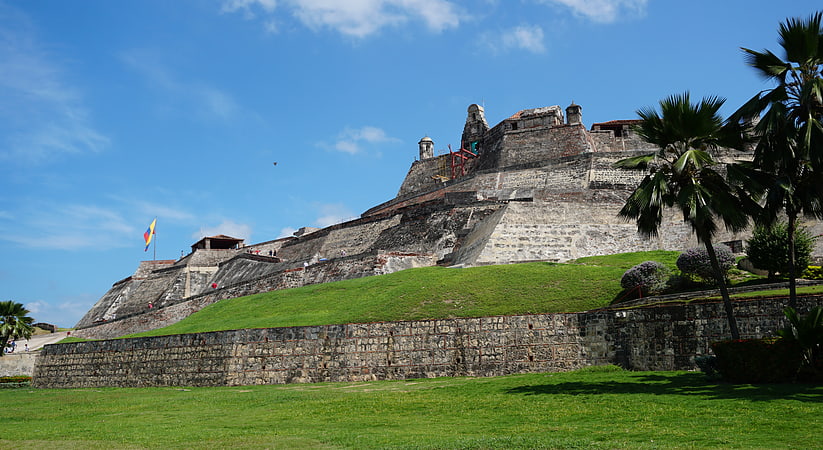
Iconic fortress with tunnels and a tour. The Castillo San Felipe de Barajas is a fortress in the city of Cartagena, Colombia. The castle was built in 1536 and is located on the Hill of San Lázaro in a strategic location, dominating approaches to the city by land or sea. It was originally known as the Castillo de San Lázaro. It was built by the Spanish during the colonial era. The fortress was involved in several battles between the late 17th to early 19th centuries involving European powers.[4]
Address: Cra. 17, 130001 Cartagena
Iglesia de Santo Domingo, Cartagena
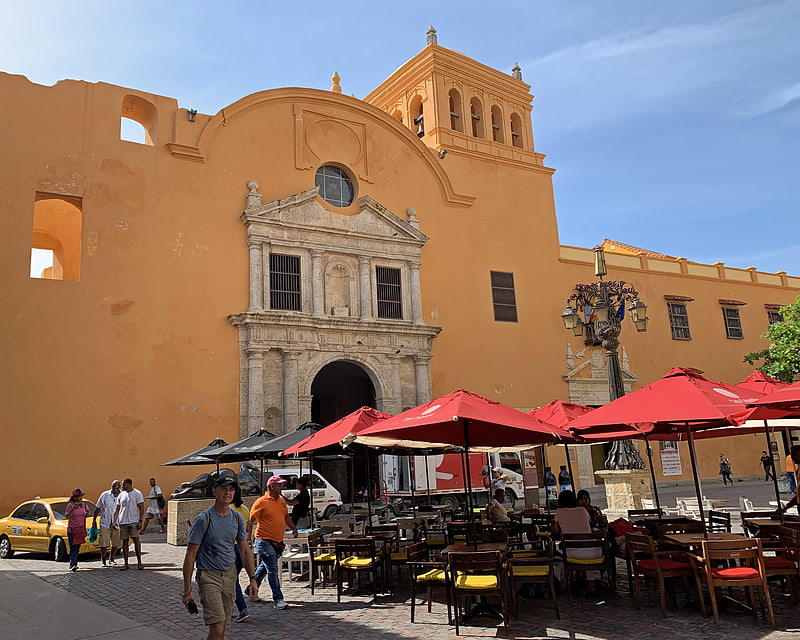
Convent. The Convento de Santo Domingo is a convent established from the 16th century in the city of Cartagena de Indias, in Colombia. Its canonical name was "Convento de San Daniel". Until 19th century maintained a community of friars of the Dominican Order. The building was then expropriated and handed over to the diocese of Cartagena, serving as a seminary, college and then institute of fine arts. It was recently restored. It is one of the most important tourist sites in the city.[5]
Address: Plaza de Santo Domingo, Cartagena
Castle of San Luis de Bocachica, Cartagena
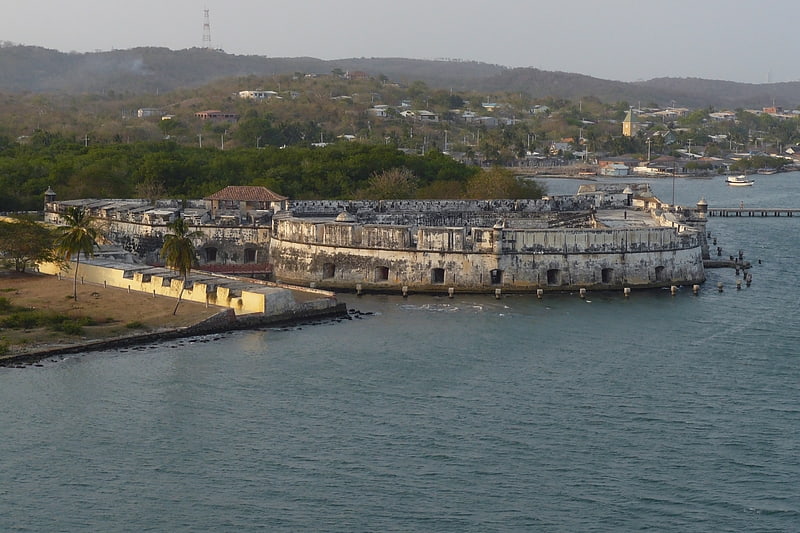
The Castle of San Luis de Bocachica, was a military fortress that defended Cartagena, Colombia. The Spanish built it in the 17th century. After it suffered war damage in the 18th century, they erected a new coastal fortification, the Castle of San Fernando on the same site.
The site on the Island of Tierra Bomba controlled deep-water access to Cartagena's harbour by the channel of Bocachica (or "small entrance" as opposed to Bocagrande, the "big entrance").[6]
Cerro Nutibara, Medellín
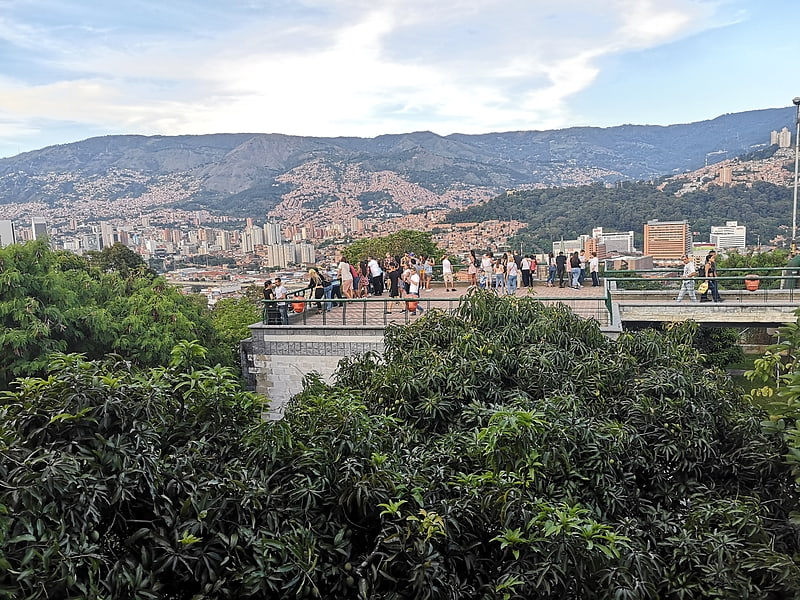
Park in Medellín, Colombia. Nutibara Hill is a rocky hill formation located in the Colombian city of Medellin, in the geographic center of the Aburrá Valley and on the west bank of the Medellín River. It is one of the few ecosystems that is conserved in Medellín and is considered one of the city's seven "guardian" hills. The hill has a sculpture park, the open-air Carlos Vieco Auditorium, and the Pueblito Paisa a reproduction of the traditional Colombian township, amongst other sights. The hill is 80 meters tall and has an area of 333,300 m2. It is named after the indigenous Chief Nutibara.
Initially with the arrival of the Spanish conquistadors, the hill was called "Marcela of the Parra Hill", and then "Cadavides Hill". Finally, it was renamed Nutibara, which continues today.[7]
Address: Calle 30A # 55-64, Medellín (Belén)
Cali Zoo, Cali
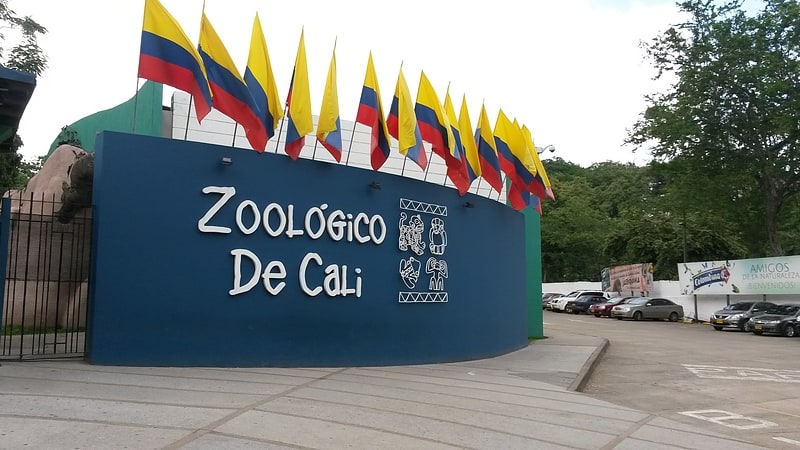
Also known as: Zoológico de Cali
Zoo. Cali Zoo is located in the city of Cali in the country of Colombia. The Zoo belongs to a foundation that carries its name and whose mission, since it took the zoo's administration in 1981, has been to improve the animals' diet, their natural environment, and the medical care of the existing fauna.
Cali Zoo promotes and performs different educational, recreational and investigative programs.
The Cali Zoo's 10 hectares (25 acres) are home to about 1,200 animals, representing some 180 species - from lemurs to condors. The Cali River runs through the zoo's park-like grounds.[8]
Address: Cl. 14, 760045 Cali (Comuna 19)
El Castillo Museum, Medellín
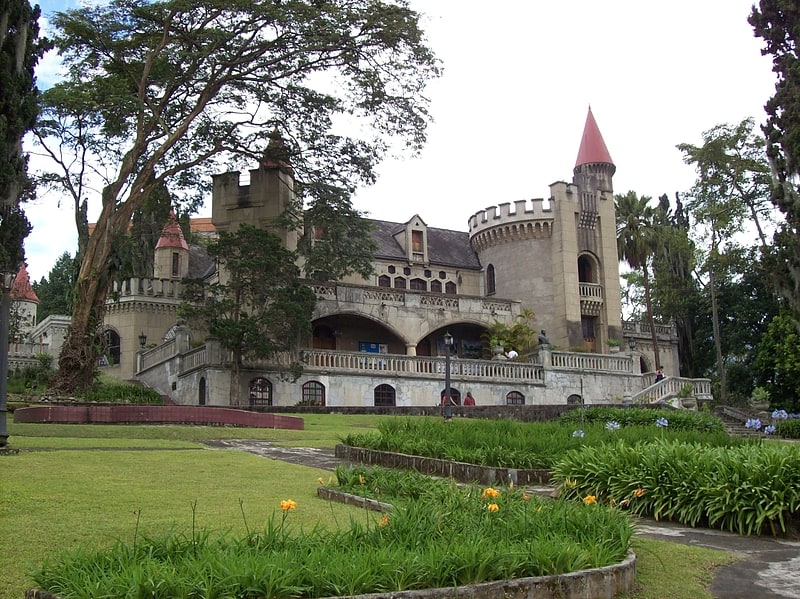
Museum in Medellín, Colombia. El Castillo Museum and Gardens is a Colombian museum in the El Poblado district of Medellín. It offers permanent exhibitions of objects in porcelain and glass, stained glass, antiques, paintings, and sculptures, among other things.
The permanent exhibit contains nine rooms and an outside garden.[9]
Address: Carrera 9 32 269, 050014 Medellin (El Poblado)
San Pedro Cemetery Museum, Medellín
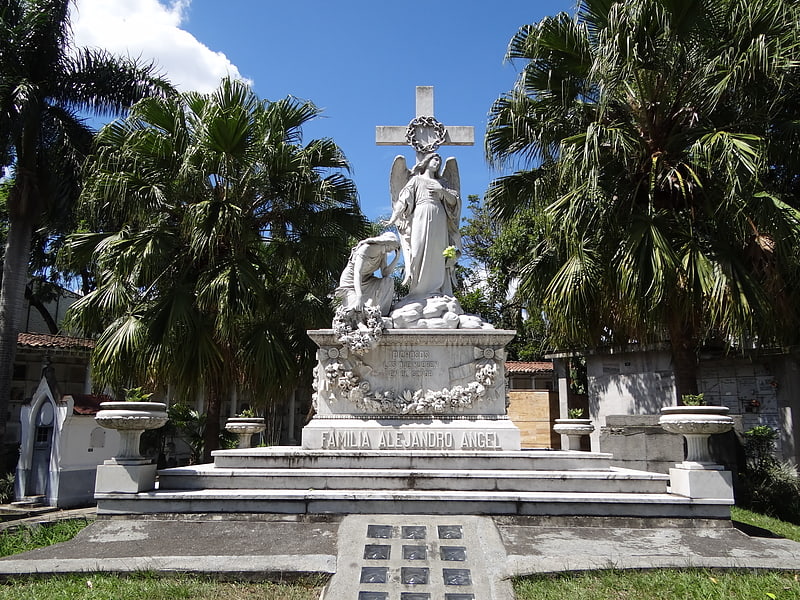
Also known as: Museo Cementerio San Pedro
Museum in Medellín, Colombia. The San Pedro Cemetery Museum is a cemetery and museum located in Medellín, Colombia. It was constructed in 1842, named a museum in 1998, and declared a National Monument of Colombia in 1999. This place is an integral part of the cultural and architectural heritage of the city. It is administered by the Foundation of San Pedro Cemetery.
Funerary monuments are erected here in memory of prominent figures in the history of Colombia. Although it falls under the category of funerary sculptures and architecture, the space has begun to emerge as a new venue for artistic dissemination. Local and national collections of art are preserved there and, in full moon nights, concerts, shows, storytelling, theater, and dance performances are held.[10]
Address: San Pedro, Medellin, Antioquia, Colombia Carrera 51 68 68, 050010 Medellin (Aranjuez)
Museo La Tertulia, Cali
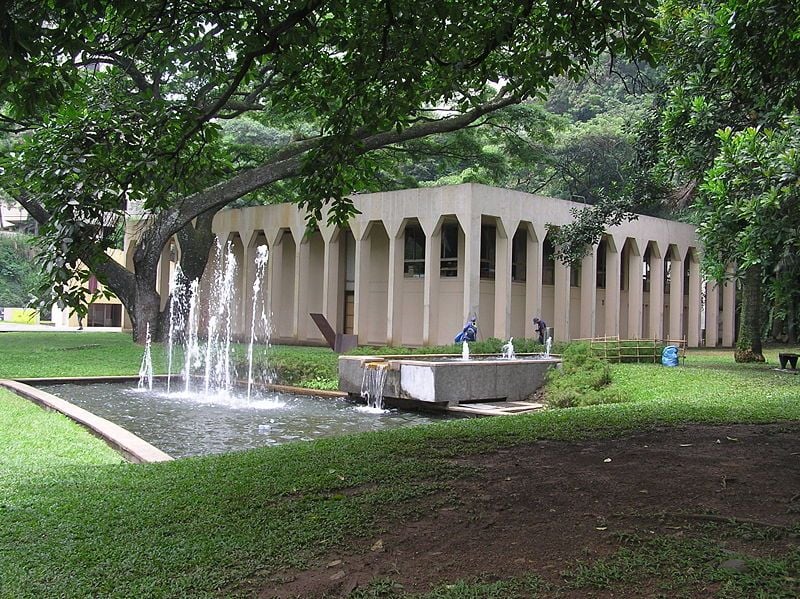
Museum in Cali, Colombia. La Tertulia Museum, formerly known as the Museum of Modern Art La Tertulia, is an art museum in Cali, Colombia. It has an important collection of American and especially Colombian art. The museum consists of three buildings: a main gallery with 300 works by national and international artists and an art workshop for children; an arthouse theater known as the Cinemateca; and a building for printing and restoration workshops.
The Cinemateca frequently hosts passing film festivals, such as EuroCine.[11]
Address: Cra. 1 #5-105, 760045 Cali (Comuna 2)
Rodadero Sea Aquarium and Museum, Santa Marta
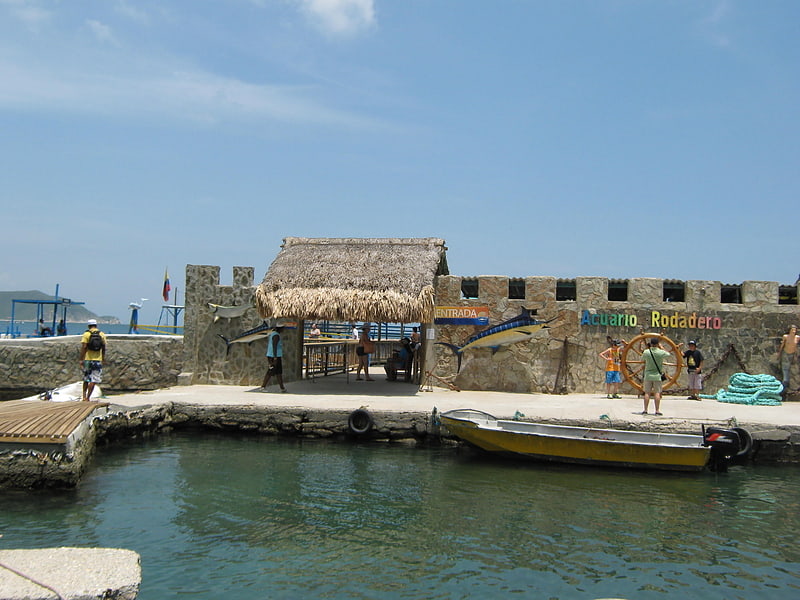
Also known as: Acuario y museo del mar del Rodadero
Aquarium in Colombia. The Rodadero Sea Aquarium and Museum is a public aquarium and maritime museum located in the Inca Inca Cove off the Rodadero beach in Santa Marta, Colombia. It was opened in 1965 by Captain Francisco Ospina Navia. The aquarium is part of the National Network of Museums of Colombia and part of ACOPAZOA, the Colombian branch of the World Association of Zoos and Aquariums. Accessible mainly by motorboat, the aquarium has 13 pools with direct connection to the Caribbean Sea, and 15 glass aquaria that contain over 805 animals that include sharks, sea turtles, dolphins, sea lions, crustaceans, fishes and seabirds, 98% of which are native to the area.
The Aquarium also contains a museum section that exhibits dissected specimens and nautical equipment, as well as an exhibition that focuses on the pre-columbine culture of the Taironas and their connection to the sea.[12]
Address: Carrera 1 No. 7 - 69, Santa Marta
Cristo Rey, Cali
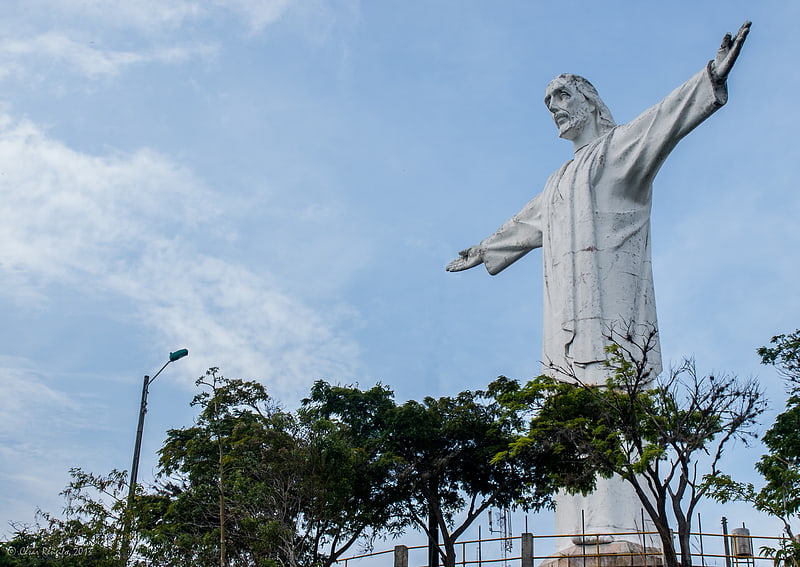
Monument in Colombia. Cristo Rey is a statue 26 meters tall located in the Cerro de los Cristales in the village of Los Andes, west of the city of Cali, Valle del Cauca, Colombia. The hill is so named because of the large amount of quartz that could be collected in the surrounding area.
On Sunday October 25, 1953, the statue was inaugurated at its summit an image of Christ in celebration of the fifty years following the end of the War of a Thousand Days. It is made of iron and concrete, with a mass of 464 tons and a height of 26 m, of which 5m belong to the pedestal.[13]
Address: Via a Cristo Rey, 760008 Cali
Playa Grande, Santa Marta
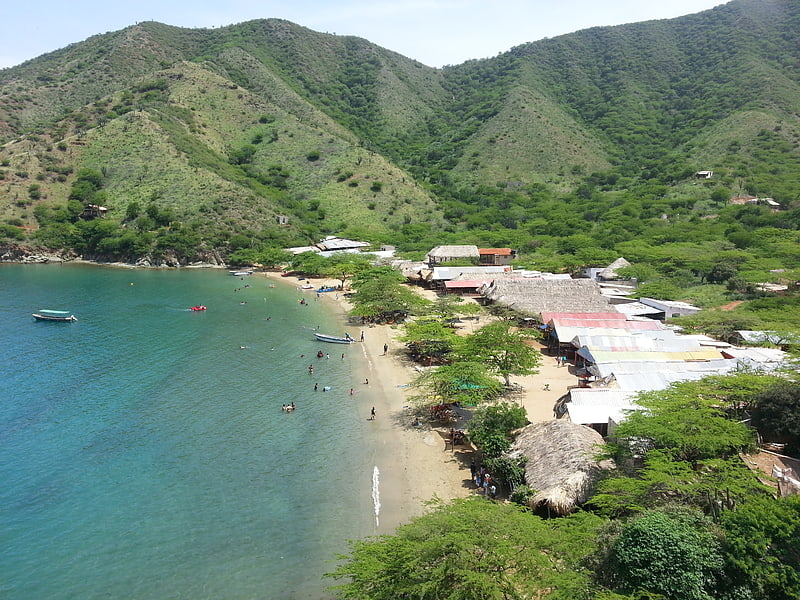
Beach, Outdoor activities, Park
Bahia Concha, Santa Marta
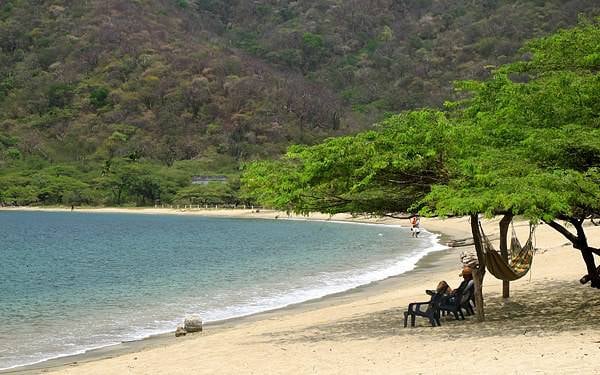
Beach
Address: Bahía Concha, Santa Marta
Nevado del Ruiz, Los Nevados National Park
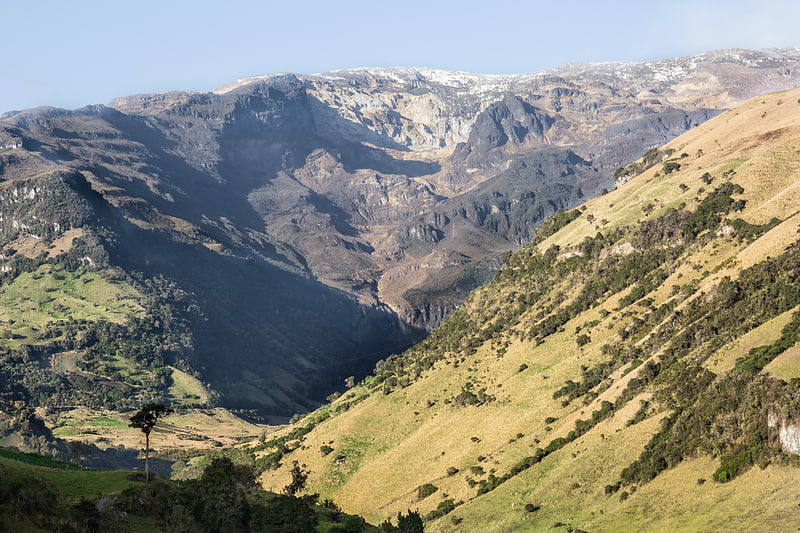
Mesa in Colombia. The Nevado del Ruiz, also known as La Mesa de Herveo is a volcano on the border of the departments of Caldas and Tolima in Colombia, about 129 kilometers west of the capital city Bogotá. It is a stratovolcano composed of many layers of lava alternating with hardened volcanic ash and other pyroclastic rocks. Volcanic activity at Nevado del Ruiz began about two million years ago, since the Early Pleistocene or Late Pliocene, with three major eruptive periods. The current volcanic cone formed during the present eruptive period, which began 150,000 years ago.
The volcano usually generates Vulcanian to Plinian eruptions, which produce swift-moving currents of hot gas and rock called pyroclastic flows. These eruptions often cause massive lahars (mud and debris flows), which pose a threat to human life and the environment. The impact of such an eruption is increased as the hot gas and lava melt the mountain's snowcap, adding large quantities of water to the flow. On November 13, 1985, a small eruption produced an enormous lahar that buried and destroyed the town of Armero in Tolima, causing an estimated 25,000 deaths. This event later became known as the Armero tragedy—the deadliest lahar in recorded history. Similar but less deadly incidents occurred in 1595 and 1845, consisting of a small explosive eruption followed by a large lahar.
The volcano is part of Los Nevados National Natural Park, which also contains several other volcanoes. The summit of Nevado del Ruiz is covered by large glaciers. The volcano continues to pose a threat to the nearby towns and villages, and it is estimated that up to 500,000 people could be at risk from lahars from future eruptions.
Today, the Nevado del Ruiz volcano is constantly monitored by the Volcanic and Seismic Observatory of Manizales.[14]
Laureano Gómez bridge, Barranquilla

The official Laureano Gómez bridge, which was popularly named after its promoter Alberto Pumarejo as Pumarejo bridge, is a bridge in Colombia, built over the Magdalena River to connect the Salamanca Island Road Park and the city of Barranquilla. The bridge was designed by Riccardo Morandi and built by an Italian-Colombian group between 1970 and 1974. The entire bridge is based on piles that go up to 30 meters below the water level and is 1,500 meters long and 12.5 meters wide, with main span of 140 meters, and is built of concrete.
This Pumarejo Bridge, which was controversial since its design stage because of its poor technical characteristics, especially its limited gauge, which prevented the development of river navigation on the Magdalena River, was replaced on December 20th 2019 by the new Alberto Pumarejo bridge. The old bridge will possibly be demolished, at least the central plot, which prevents river navigability.[15]
Nevado del Tolima, Los Nevados National Park
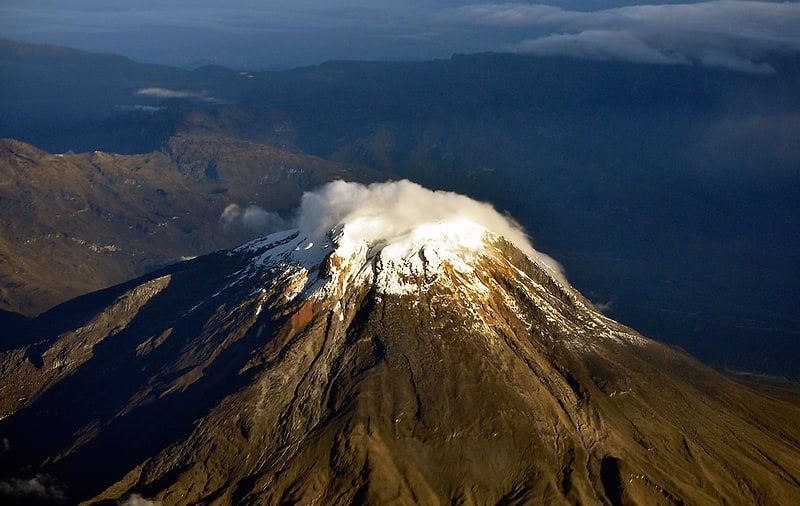
Classic volcano with climbing routes. The Nevado del Tolima is a Late Pleistocene to recently active andesitic stratovolcano located in the Tolima department, Colombia. The volcano lies south of Nevado del Ruiz volcano and is situated within the Los Nevados National Natural Park. The volcano, whose most recent activity dates to 1943 and last major eruption around 3600 years ago, overlies the Eocene El Bosque Batholith, dated at 49.1 ± 1.7 Ma.[16]
Queen Mary Cathedral, Barranquilla
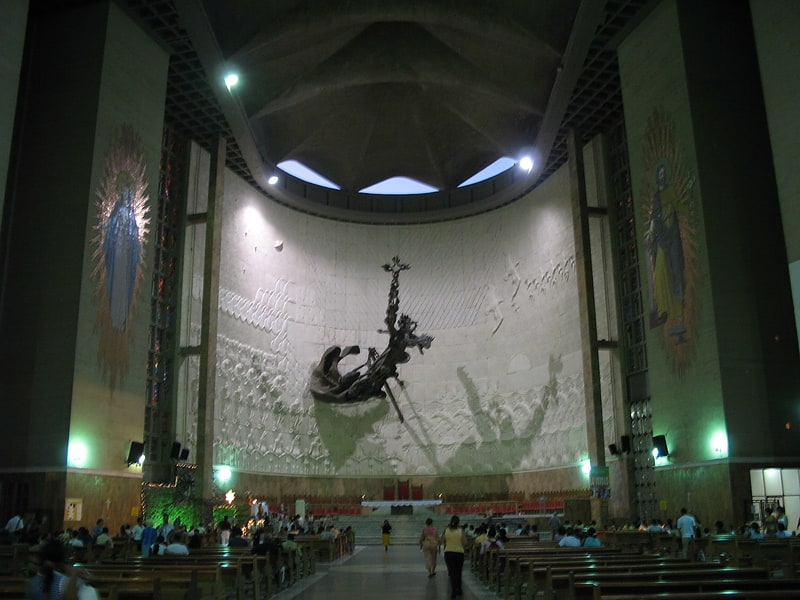
Also known as: Catedral metropolitana María Reina de Barranquilla
Cathedral in Barranquilla, Colombia. The Queen Mary Cathedral also called Metropolitan Cathedral of Queen Mary is a cathedral church of Catholic worship dedicated to the Blessed Virgin Mary. The cathedral is located in the central area of Barranquilla, Colombia, western side of the Plaza de la Paz, where the zero point of the city is located. The Cathedral is located within the Roman Catholic Archdiocese of Barranquilla, seat of the Archbishop and the parish Cathedral.[17]
Bioparque Los Ocarros, Villavicencio
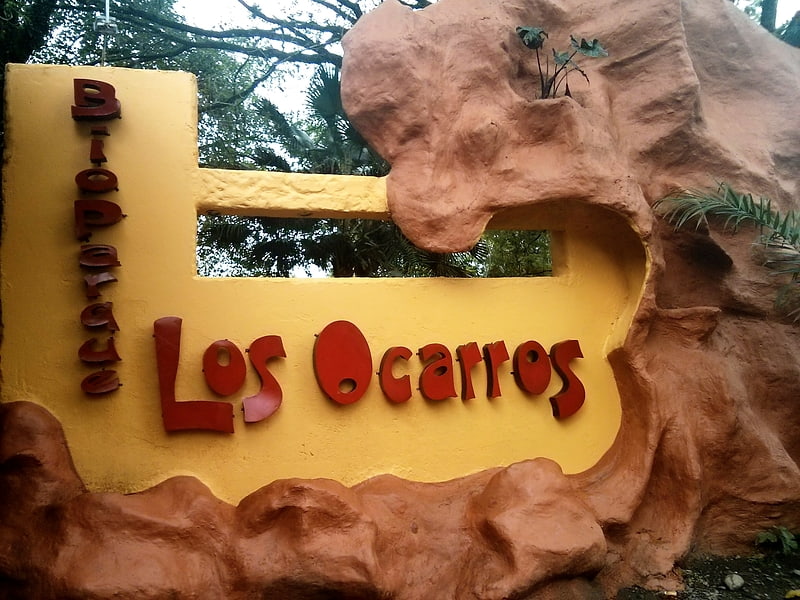
Also known as: Bioparque los Ocarros
Zoo park in Colombia. Bioparque Los Ocarros or Los Ocarros is a zoo park located in the city of Villavicencio in the country of Colombia. The biopark houses animals of the region and works closely with the environmental authorities to preserve the local fauna.
Los Ocarros 5.5 hectares (14 acres) are divided into 7 different sections with 38 habitats that are home to about 181 species of animals. The biological park also has an artificial lake that is home to a variety of turtles, fish and birds.[18]
Address: Km 5 Via A Restrepo, Villavicencio
Captain Antonio Ricaurte House Museum, Villa de Leyva
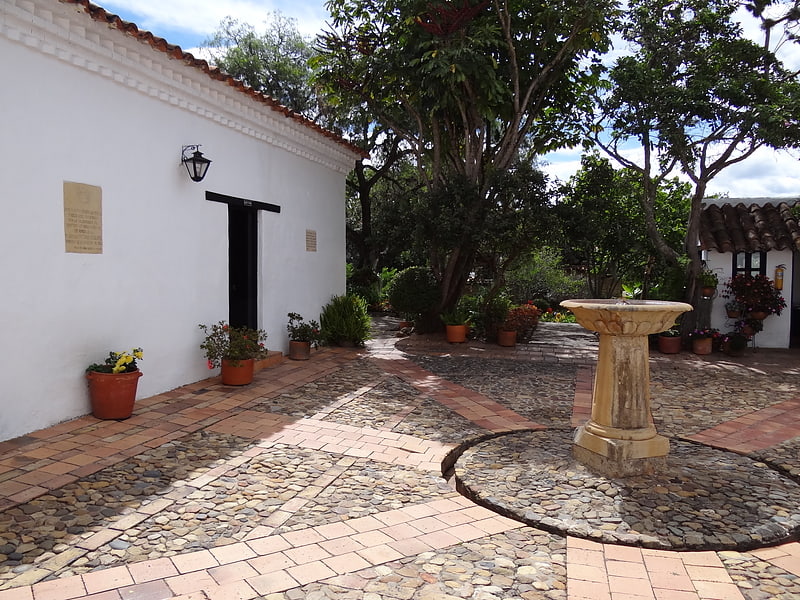
The Captain Antonio Ricaurte House Museum is a historical museum located in Villa de Leyva, Colombia. The museum is dedicated to show various tools and weapons used in the colonial times of Colombia as well as the history of the country.[19]
Address: Cl. 15 #8115, 154001 Villa de Leyva
Barranquilla Colombia Temple, Barranquilla
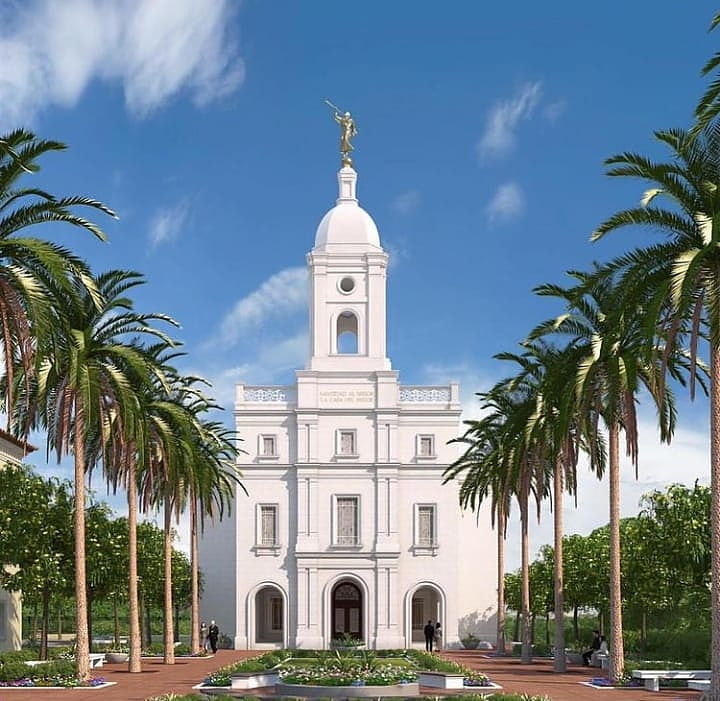
Church of jesus christ of latter-day saints in Barranquilla, Colombia. The Barranquilla Colombia Temple is a temple of The Church of Jesus Christ of Latter-day Saints in Puerto Colombia, Colombia.[20]
Cathedral of Cúcuta, Cúcuta
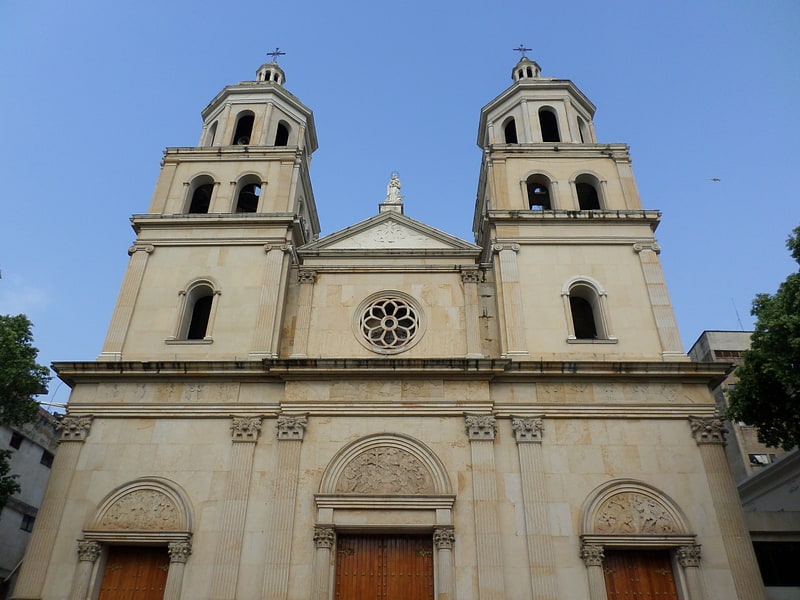
Also known as: Catedral de Cúcuta
Catholic church in Cúcuta, Colombia. The Cathedral of San José de Cúcuta is a Catholic cathedral in the city of Cúcuta. It lies in the center of the town, in front of Santander Park and close to the city hall. It is considered to be the historic and cultural heart of the city. The cathedral is the headquarters of the Bishop of Cúcuta, and became the main church of the Diocese of Cúcuta on May 29, 1959, when it was consecrated by Pope Pio XII. It is predominantly of pure Romanesque style, with an imposing facade of stone veneer.[21]
Address: Av. 5 #10-73, 540006 Cúcuta
Our Lady of Poverty Cathedral, Pereira
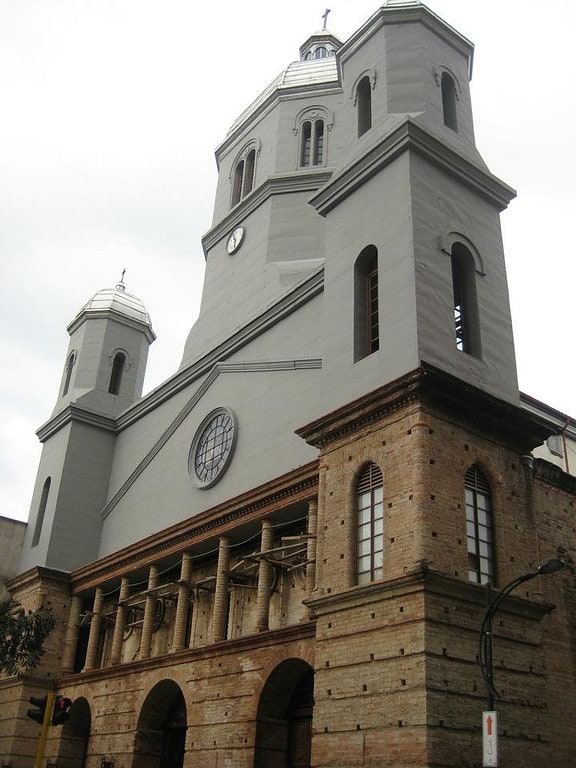
Also known as: Catedral de Nuestra Señora de la Pobreza de Pereira
Cathedral in Pereira, Colombia. The Our Lady of Poverty Cathedral, also called Pereira Cathedral, is the cathedral church of Catholic worship in the city of Pereira, capital of Risaralda department in the South American country of Colombia. The cathedral is dedicated to the Virgin Mary under the title of Our Lady of Poverty.
It is the main church of the Diocese of Pereira and was elevated to cathedral on December 18, 1952, by a bull of Pope Pius XII.
It is located on the western side of the Plaza de Bolivar, between Calles 20 and 21 south of Carrera 7, in the center of the city.[22]
Address: Cra. 7, Pereira
Lake Iguaque, Villa de Leyva
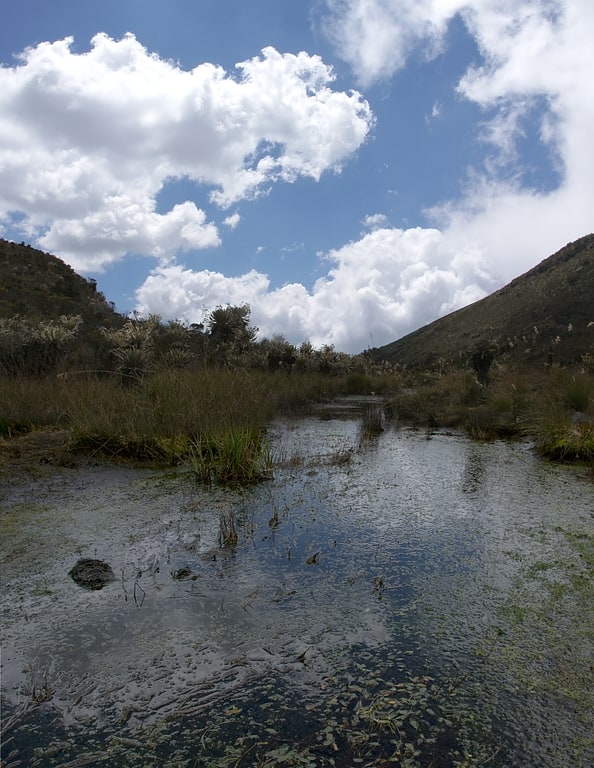
Also known as: Laguna de Iguaque
Lake in Colombia. Lake Iguaque is a lake located in the Boyacá Department of Colombia. The lake and the surrounding area was declared a Flora and Fauna Sanctuary in 1977.[23]
Address: 5. 706500, -73. 457056, Villa de Leyva
César Gaviria Trujillo Viaduct, Pereira
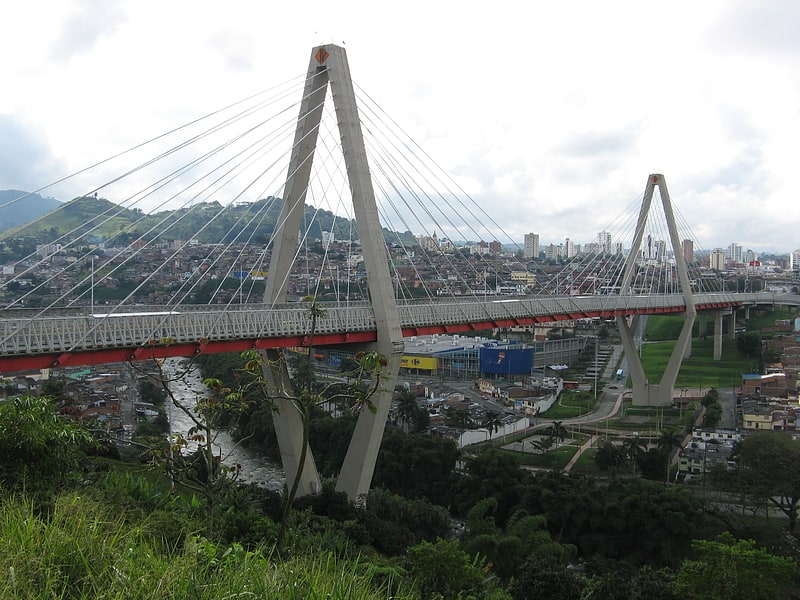
Also known as: Viaducto César Gaviria Trujillo
Cable-stayed bridge in Colombia. The César Gaviria Trujillo Viaduct is a cable-stayed bridge connecting the neighbouring cities of Pereira and Dosquebradas in Risaralda, Colombia. It is one of the longest cable-stayed bridges in South America and, at the time of its completion in 1997, ranked 20th in the world.
The bridge has a total length of 440 metres, including a central span of 211 metres. There are four traffic lanes and two sidewalks, giving a total width of 26 metres. There are two towers (Concrete material) that have a height of 56 metres above the deck (Steel structure), which in turn has a maximum height of 55 metres above the Otún River.
The bridge was built by a Brazilian and German consortium (Consortium of Andrade Gutierrez and Walter Bau AG), with assistance from French and Portuguese firms. The fabrication of the Steel structure was contracted to Industrias Metalurgicas Van Dam in Venezuela. Construction of the bridge took three years and was completed in 1997, at a cost of US$58 million. Twelve workers died during the construction process.
The bridge has had a significant impact on reducing traffic congestion in the two cities. It reduced the travel time between them by up to 40 minutes, avoiding the need to descend to the bottom of the river valley. It also had an important regional effect, through improved transportation links between Manizales, Armenia and Pereira.
The bridge has become infamous as a site for suicides. From the time of its completion until July 2005, 88 people ended their lives by jumping off the bridge, including people from neighbouring departments who were attracted by the high and accessible structure. Two people have survived the fall, in one case by landing in a stand of guadua growing by the river. In a particularly shocking episode in 2003, a woman threw her 2-year-old daughter off the bridge before jumping to her own death with her 7-month-old daughter. In 2008, the government of Pereira demanded the construction of some kind of barrier along the bridge's edges, and, since the barrier's construction, no one has jumped off the bridge.
The bridge is named after Pereira-born César Gaviria Trujillo, president of Colombia from 1990 to 1994.[24]
Address: Av 30 de Agosto, Pereira, Risaralda, Pereira
Sol Muisca, Villa de Leyva
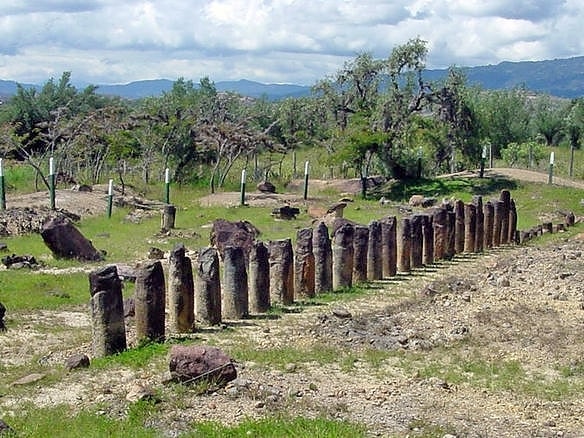
Also known as: Parque Arqueológico de Monquirá
El Infiernito, is a pre-Columbian archaeoastronomical site located on the Altiplano Cundiboyacense in the outskirts of Villa de Leyva, Boyacá, Colombia. It is composed of several earthworks surrounding a setting of menhirs; several burial mounds are also present. The site was a center of religious ceremonies and spiritual purification rites, and also served as an astronomical observatory.[25]
Address: Via a Fundadores, 154007 Villa de Leyva
Santander Park, Cúcuta
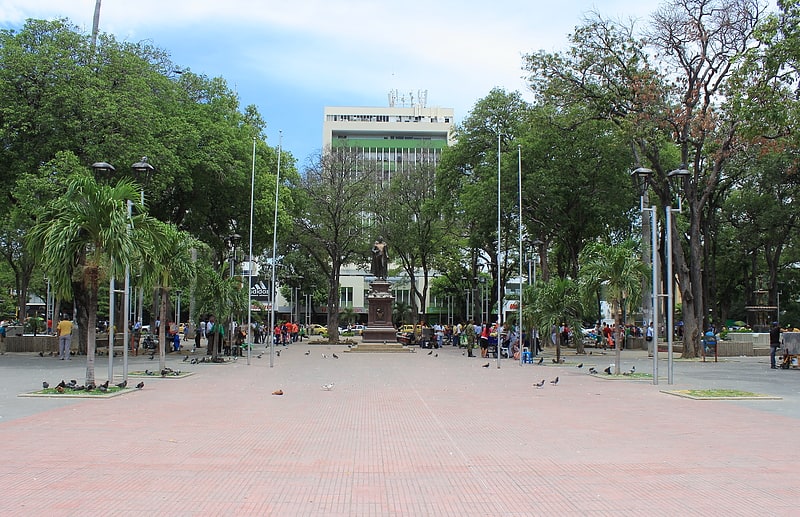
Also known as: Parque Santander
Park in Cúcuta, Colombia. Santander Park is located in Cúcuta, Colombia. The park is bordered by 5th and 6th Avenue and 10th and 11th Street and was previously the location of the Grand Square of San José de Guasimales, a site hosting principal events and public spectacles in Cúcuta. In the center of the park is a bronze statue of the Cúcuta-born Francisco de Paula Santander, created by the German sculptor Carl Bornr and unveiled on August 5, 1890.
The Cathedral of San José and Cúcuta's city hall are located at the park's edges.[26]
Address: Avenida 5, Cúcuta
Francisco de Paula Santander International Bridge, Cúcuta

The Francisco de Paula Santander International Bridge is a road bridge connecting Colombia with Venezuela across the Táchira River. One of five bridges across the border between the two countries, it is about 210 meters long, with two lanes of traffic and a width of 7.3 meters.
It connects Cúcuta in North Santander, Colombia and Ureña in Táchira, Venezuela. It is named after Francisco de Paula Santander.
In 2019 the bridge was physically blocked by the Venezuelan Army.[27]
Dosquebradas, Pereira
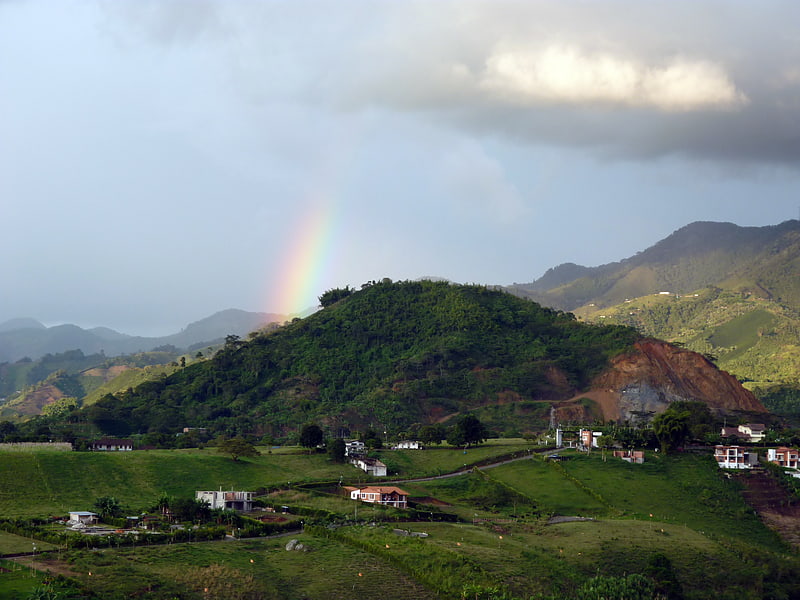
City in Colombia. Dosquebradas is the second largest city and a municipality in the Risaralda Department, Colombia. As of 2019, it had a population of approximately 207,000 inhabitants. The city is connected by the César Gaviria Trujillo Viaduct to Pereira, the capital of the department.
The name of the city literally means "two creeks" (dos quebradas), Santa Teresita and Las Garzas. Dosquebradas is sometimes called the Pink Zone (Zona Rosa) of Pereira because it has many nightclubs and bars, which are filled with young people on the weekends.
It grew up as an industrial center serving Pereira in the 1970s and 1980s. With the construction of El Poblado neighborhood (low-income housing) it experienced a population boom, providing residence to many families that commuted to Pereira for work.[28]
Lake Otún, Los Nevados National Park
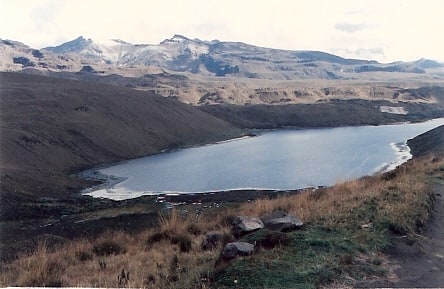
Also known as: Laguna del Otún
Lake. Lake Otún is a small lake in the Nevados National Park, in the Risaralda department of Colombia. It located at an altitude of 3,900 m and has an area of 1.5 square kilometres. The lake is of glacial origin and is fed by meltwaters of the Nevado Santa Isabel. Lake Otún is the source of the Otún River, which supplies drinking water to the cities of Pereira and Dosquebradas.
Lake Otún is an important breeding ground for several threatened or endangered bird species, including the Colombian torrent duck (Merganetta armata columbiana), the Colombian ruddy duck (Oxyura jamaicensis andina), the Andean teal (Anas andium) and the Andean snipe (Gallinago jamesoni).
Lake Otún contains a large population of rainbow trout, introduced for recreational fishing and a major attraction for visitors to the lake.[29]
Estadio La Independencia, Tunja

Stadium in Tunja, Colombia. Estadio La Independencia is a multi-use stadium in the city of Tunja, Colombia. It is currently used mostly for football matches. The stadium has a capacity of 25,000 people, and is 2,800 metres above sea level. Boyacá Chicó and Patriotas play their home games at this stadium.
Since Boyaca Chicó's title of the 2008 Categoría Primera A Apertura in June 2008, and automatic qualification to 2009 Copa Libertadores, the stadium was due to be expanded, in order to achieve the minimum 20000 seats that CONMEBOL requires to host an international match. The expansion work started in December, being run slower than expected. Despite this, the renovations were completed for the first Chicó match at La Independencia, against Brazil's Gremio.
Since the beginning of 2017, improvements have been made due to the participation of Patriotas F.C. in the 2017 Copa Sudamericana. The stadium has been the main venue for musical and cultural events, including concerts of international singers such as Marc Anthony, Alejandro Fernández, among others.[30]
Address: Villa Olimpica, Tunja
Quimbaya Museum, Armenia
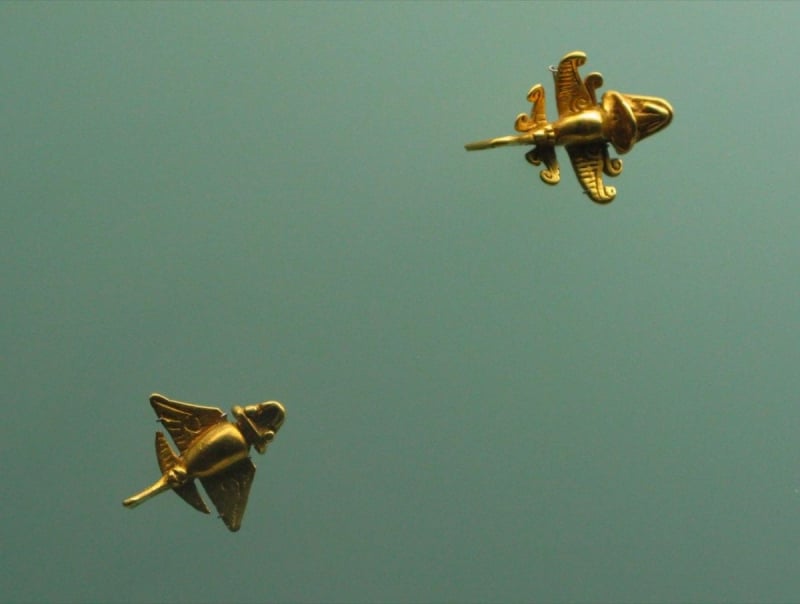
Museum in Armenia, Colombia. Quimbaya Museum is a museum located in Armenia, Colombia designed by Colombian architect Rogelio Salmona. It displays a large collection of precolumbian artcrafts, about 390 gold objects, 104 pottery, 22 stone sculptures, carved woods, and other issues, mainly from the precolumbian Quimbaya civilization, Embera and some other amerindian tribes. Some of the most important pieces are the gold Poporos and the zoomorphic vases. Most of the pieces have been preserved for experts from Gold Museum of Bogotá. In its exhibition rooms together with other pottery, stone, shell, wood and textile archaeological objects, these items, made of what to indigenous cultures was a sacred metal, testify to the life and thought of different societies which inhabited what is now known as Colombia before contact was made with Europe.
The Bank of the Republic began in 1939 helping to protect the archaeological patrimony of Colombia. The Gold Museum and the Quimbaya Museum are some of its main achievements.[31]
Casa del Fundador, Tunja

Museum in Tunja, Colombia. The Casa del Fundador Gonzalo Suárez Rendón is a museum and monument in Tunja, the capital of Boyacá, Colombia. It is situated on the central square of Tunja, named Plaza Bolívar, but historically called Plaza Suárez Rendón, honouring the city founder Gonzalo Suárez Rendón, who established Tunja for the Spanish Crown on August 6, 1539. The colonial building, declared a monument in 1959 and designated as museum in 1965, is the only remaining house of a city founder in Latin America and started construction in 1540.[32]
Cathedral of the Holy Family, Bucaramanga
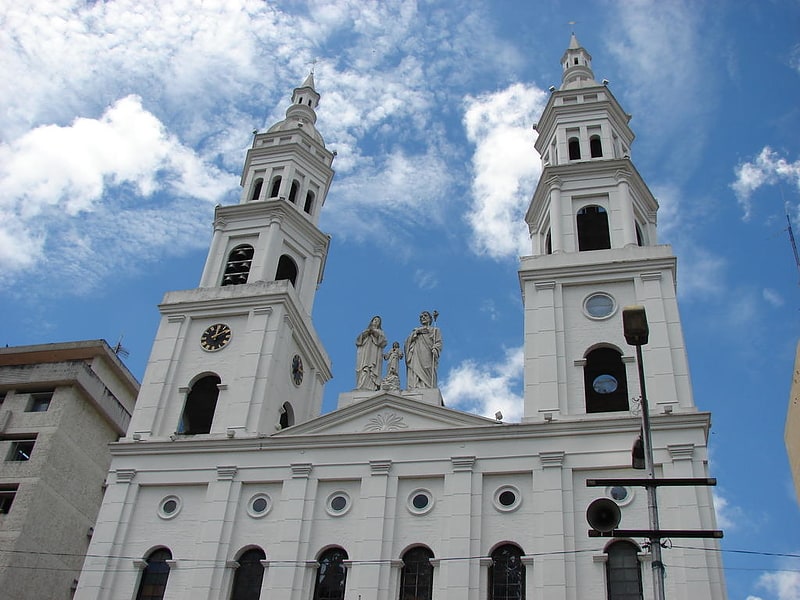
The Metropolitan Cathedral of the Holy Family of Bucaramanga is a cathedral of Catholic worship located in the Colombian city of Bucaramanga, in the department of Santander. It is notable for its Carrara marble chair and high altar, stained glass windows, and several religious paintings by Luis Alberto Acuña and Óscar Rodríguez Naranjo.
Viaducto De La Novena, Bucaramanga
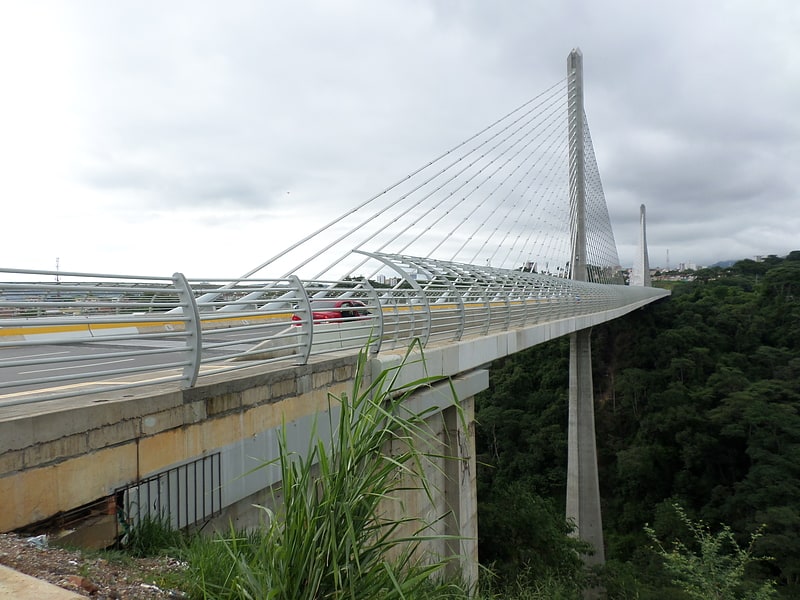
The Provincial Viaduct is located in Bucaramanga, northeastern Colombia. It is a cable-stayed bridge that connects the sectors of Calle 45 with Carrera 9a and Ciudadela Real de Minas. Its construction was scheduled to last between 18 and 22 months, but it took 53 months to be delivered on April 9, 2015. The bridge is 550 m long and has 2 concrete pillars 130 m high and its deck is 30 m wide.
The bridge was pre-designed by engineer Alfredo Santander Palacios. The final design for the construction was made by the Spanish company, Carlos Fernández Casado, S.L. Oficina de Proyectos. The bid for its construction was won by the Consorcio Internacional Viaducto Carrera Novena, this consortium was formed by the companies Sig Southwestern International Group S.A. from Colombia and Mexicana de Presfuerzo S.A. de CV (MEXPRESA), from Mexico.
Girón, Bucaramanga
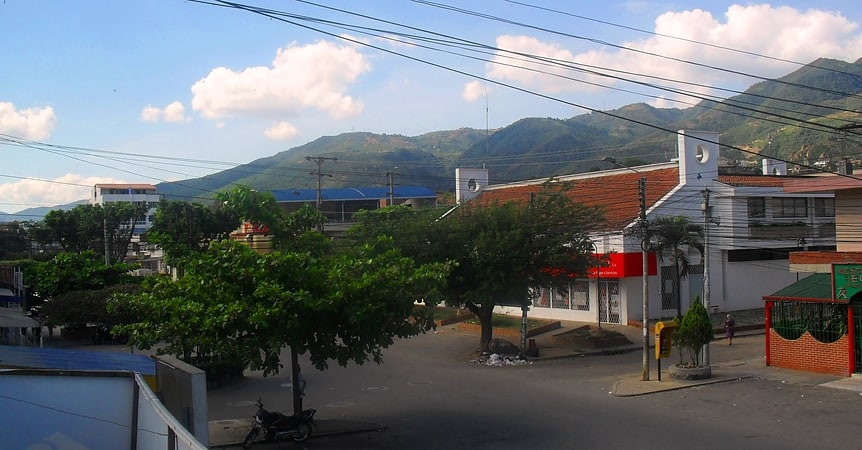
Municipality in Colombia. San Juan de Girón, formerly: Villa de los Caballeros de Girón, is a municipality of the Santander Department, which is part of the Bucaramanga Metropolitan area in northeastern Colombia.
Girón was declared a Colombian Pueblo Patrimonio (heritage town) by the Colombian government in 2010.[33]
Estadio Departamental Libertad, Pasto
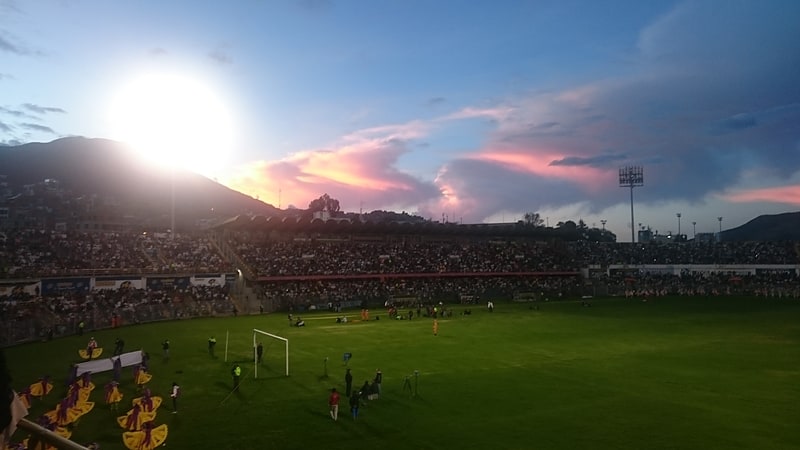
Multi-purpose stadium in Pasto, Colombia. Estadio Departamental Libertad is a multi-purpose stadium in Pasto, Colombia. It is currently used mostly for football matches and is the home stadium of Deportivo Pasto. The stadium holds 20,000 people and was built in 1955.
In 2007 Pasto qualified for the Copa Libertadores, so the stadium was expanded to fit CONMEBOL requirements. The north stand was expanded, which completed the bowl of the stadium and made every side two tiers since before the renovation the north side was semi-open and had only one tier.
In 2019, the seating rows were painted, the lighting was upgraded, the changing rooms were renovated, and a large TV screen was installed. The renovations finished in December 2019. Around $20 million COL were used.[34]
Address: El Fortín, Pasto
Cathedral Basilica of Our Lady of Rosary, Manizales
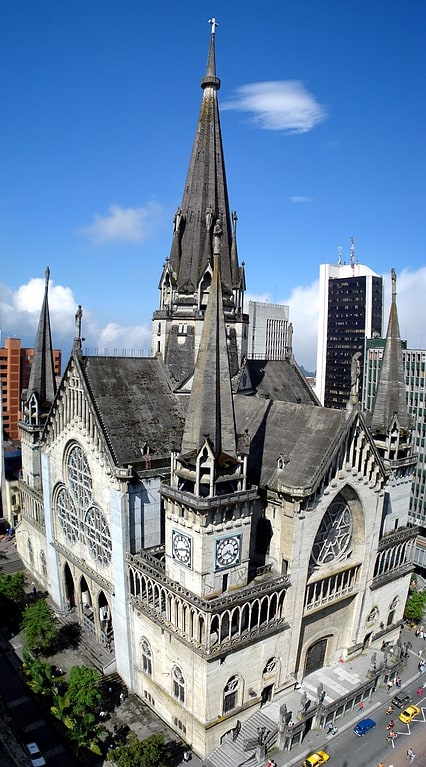
Also known as: Catedral basílica de Nuestra Señora del Rosario de Manizales
Cathedral in Manizales, Colombia. The Cathedral Basilica of Our Lady of Rosary also called Manizales Cathedral It is a Catholic cathedral, located directly opposite the Plaza de Bolivar in the city of Manizales, Colombia.[35]
Address: Plaza de la Catedral, Manizales
Torre de Herveo, Manizales

Tower in Manizales, Colombia. Torre de Herveo, also known as Torre del Cable, is a wooden Colombian lattice tower which was the tallest of the support towers of the Manizales - Mariquita Cableway. The Torre de Herveo was in service from 1922 to 1961. It only serves as a monument and as transportation today. The engineer who built the tower is James Lindsay. Wood was used as the building material for the tall tower and was built with approximately 1 470 blocks of timbers from the wood of Guaiac, Mahogany, Bay and Comino trees.[36]
Cojines del Zaque, Tunja

Park in Tunja, Colombia. The Cojines del Zaque is an archeological site of the Muisca located in the city of Tunja, Boyacá, which in the time of the Muisca Confederation was called Hunza. The cojines are two round stones used in the religion of the Muisca to worship Sun god Sué and his wife; Moon goddess Chía. When the Spanish conquistadores arrived, they called them Cojines del Diablo.[37]
Museo de Arte del Tolima, Ibagué
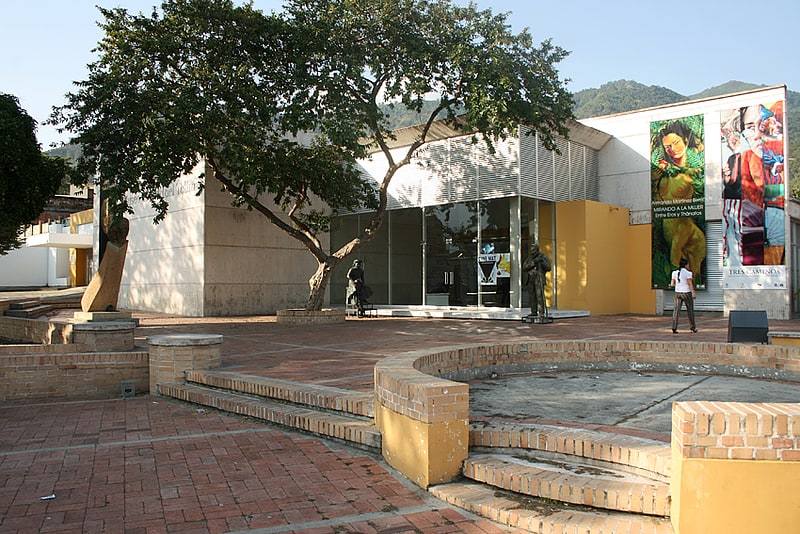
Museum in Ibagué, Colombia. The Museo de Arte del Tolima is an art museum located in Ibagué, capital of the Tolima Department of Colombia. It features pieces of Colombian art and contemporary Latin American art. The museum was founded by the artists Dario Ortiz, Julio Cesar Cuitiva, Margareth Bonilla Morales, and others and opened its doors to the public in December 2003. It offers a significant permanent collection as well as educational program and cultural programs to its visitors.
Works of the permanent collection include Epifanio Garay, Ricardo Acevedo Bernal, Jesús Rafael Soto, Carlos Cruz-Díez, Leonora Carrington, Alejandro Obregón, Fernando Botero, Édgar Negret, Julio Fajardo, Dario Ortiz, José Bedia, Ricardo Borrero Álvarez, José María Espinoza, Armando Villegas, pieces from Colombian and Latin American artists.[38]
Calarca, Armenia

Also known as: Calarcá
Municipality in Colombia. Calarcá is a municipality in the eastern part of the department of Quindío, Colombia. It is located 4 km east of the departmental capital Armenia. Its nickname is La Villa del Cacique in homage of its writers. The city was founded in 1886 by Segundo Henao during the time of colonization by people from Antioquia Department. It is the second city in Quindío with major quantity of inhabitants. In 2016 it had an estimated population of 78,779, of which 59,986 live in the main urban zone. Located along the Colombian coffee growing axis, it was made part of the "Coffee Cultural Landscape" UNESCO World Heritage Site in 2011.[39]
Galeras, Pasto
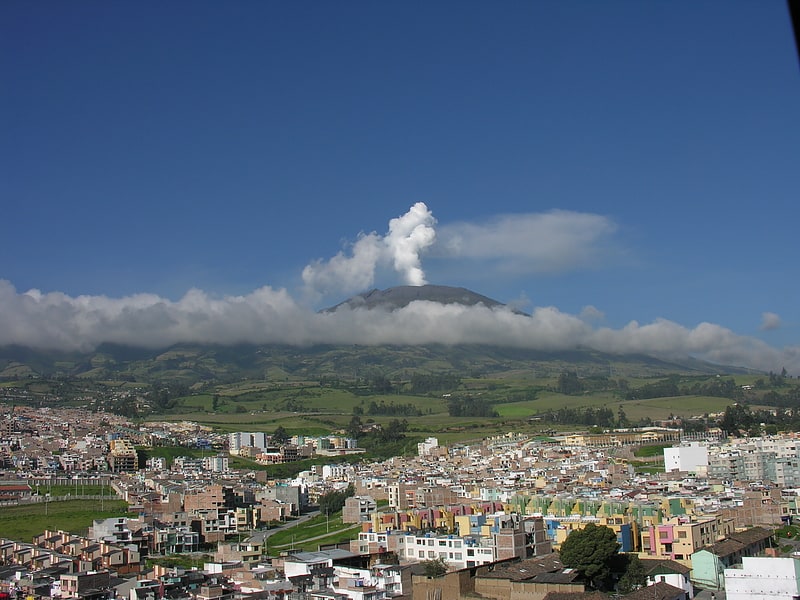
Stratovolcano in Colombia. Galeras is an Andean stratovolcano in the Colombian department of Nariño, near the departmental capital Pasto. Its summit rises 4,276 metres above sea level. It has erupted frequently since the Spanish conquest, with its first historical eruption being recorded on December 7, 1580. A 1993 eruption killed nine people, including six scientists who had descended into the volcano's crater to sample gases and take gravity measurements in an attempt to be able to predict future eruptions. It is currently the most active volcano in Colombia.[40]
Plaza de Toros de Manizales, Manizales

Tourist attraction in Manizales, Colombia. Plaza de Toros de Manizales is a bullring located on its homonym city, in the center of Colombia. It's currently used for bullfighting during the Annual Fair of Manizales in January, musical events and sport events to a lesser extent.[41]
Address: Cra 27 # 10A-04, Manizales
Los Fundadores, Villavicencio
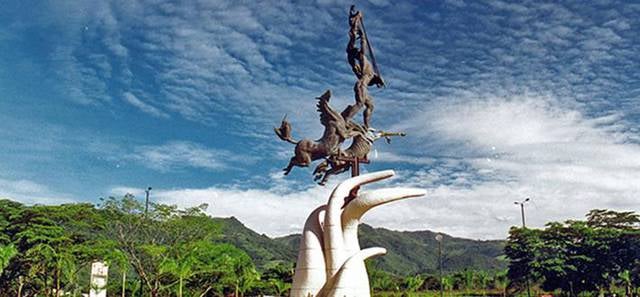
Relax in park, Park
Address: Avenida 40 # 65, Villavicencio - Meta, Villavicencio
Museo Taminango, Pasto
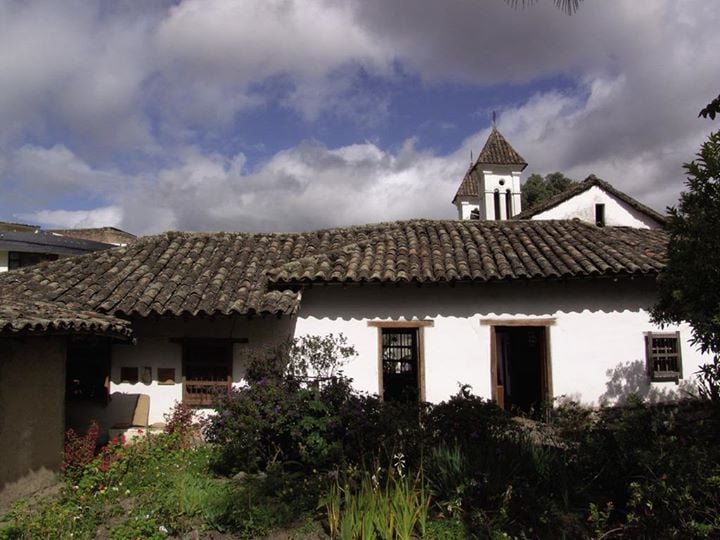
Museum
Sikuani, Villavicencio

Relax in park, Park
Address: Avenida circunvalar con Carrera 19, Villavicencio
Jardin botanical butterfly reserve, Armenia
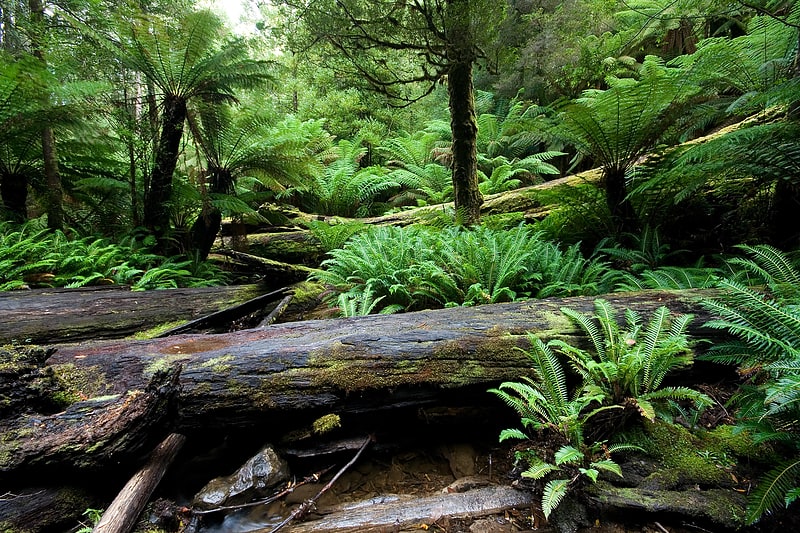
The Botanical Garden of Quindío is a conglomerate of rural properties in the department of Quindío. It has a scientific research and environmental education center located in the city of Calarcá; it is the first legally constituted in Colombia, founded in 1978 by Alberto Gómez Mejía, the OIKOS Organization, the University of Quindío and the Garden Club of Armenia.
Address: KM4 Via al Valle del Cauca, Armenia
Museo de Arte del Tolima, Ibagué
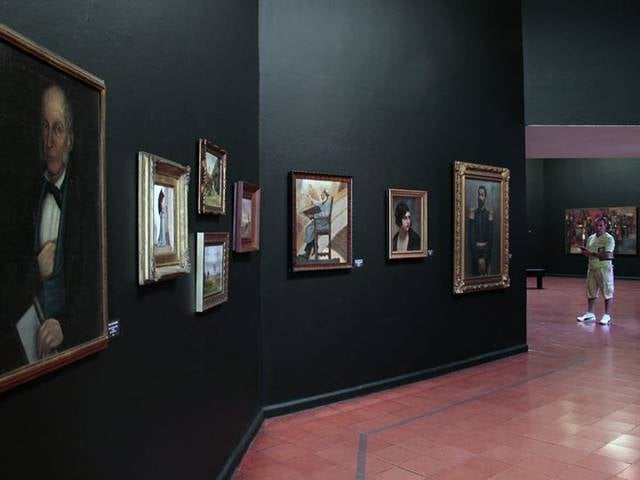
Art museum, Museum
Address: Carrera 7 No 5-93, Ibagué